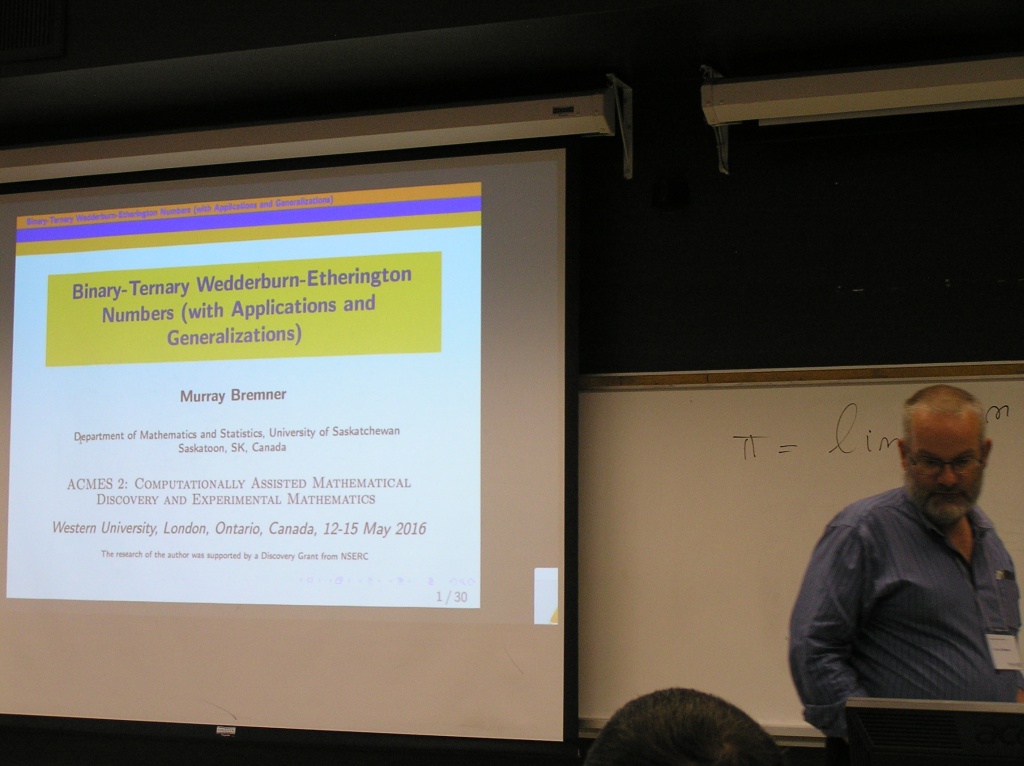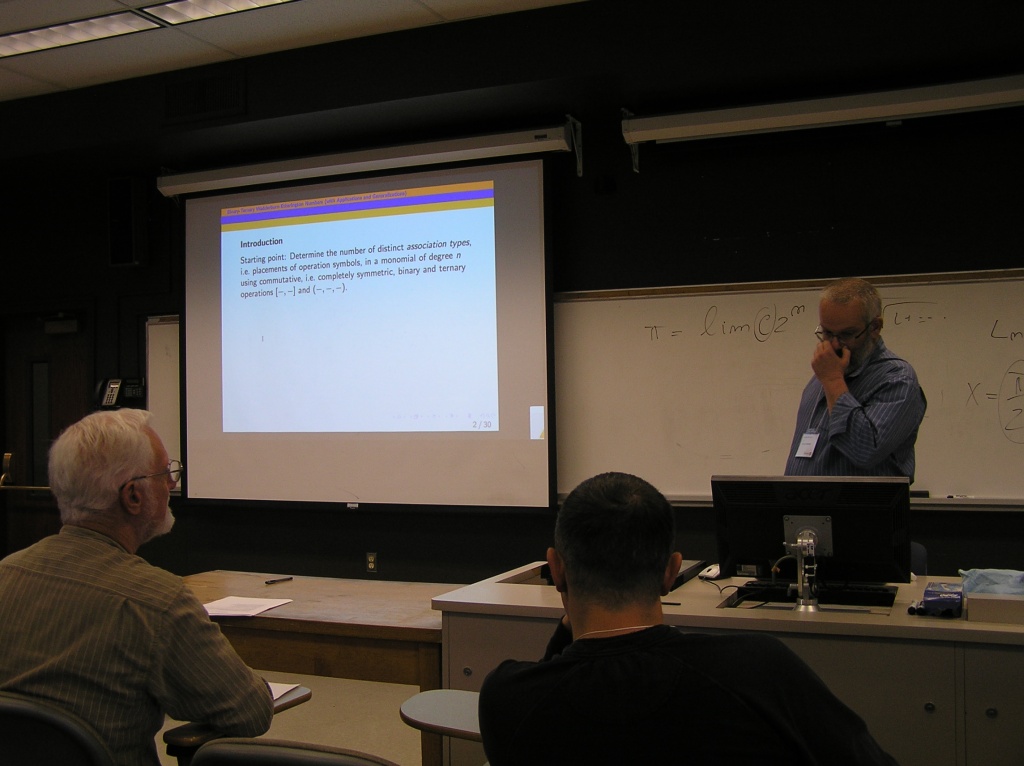



The starting point was to determine the number of inequivalent placements of operation symbols in a monomial of degree n generated by completely symmetric binary and ternary operations [-,-] and (-,-,-). Another way to visualize this is to consider directed rooted non-planar trees in which every internal node has in-degree 2 or 3: the leaves represent the arguments and the internal nodes represent the operations. Maple calculations produced this initial sequence:1, 1, 2, 4, 9, 23, 58, 156, 426, 1194, 3393, 9802, ...,
which was not in the OEIS (it is now A268172). The next step was to determine the number of inequivalent multilinear mononomials of degree n: this is the sum, over all placements of operation symbols, of n! divided by the order of the group of symmetries of the placement. Further Maple calculations produced this initial sequence: 1, 1, 4, 25, 220, 2485, 34300, 559405, 10525900, 224449225, ..., which was not in the OEIS (it is now A268163). An internet search for the first few terms of this sequence revealed the remarkable fact that it also enumerates the number of Feynman diagrams involved with multi-gluon scattering in quantum chromodynamics. The underlying structure in both cases is the set of labeled binary-ternary directed rooted non-planar trees indexed by the number n of leaves. Further details on the connections with physics can be found in these surveys: B. Feng and M. Luo, An introduction to on-shell recursion relations, Review Article, Frontiers of Physics, October 2012, Volume 7, Issue 5, pp. 533-575. M. L. Mangano and S. J. Parke, Multi-parton amplitudes in gauge theories, Physics Reports, Volume 200, Issue 6, February 1991, pp. 301-367. In this talk I will show how these sequences were discovered, sketch the relation with nuclear physics, and describe an infinite family of other sequences which are also related to Feynman diagrams.
 |
 |
 |
 |